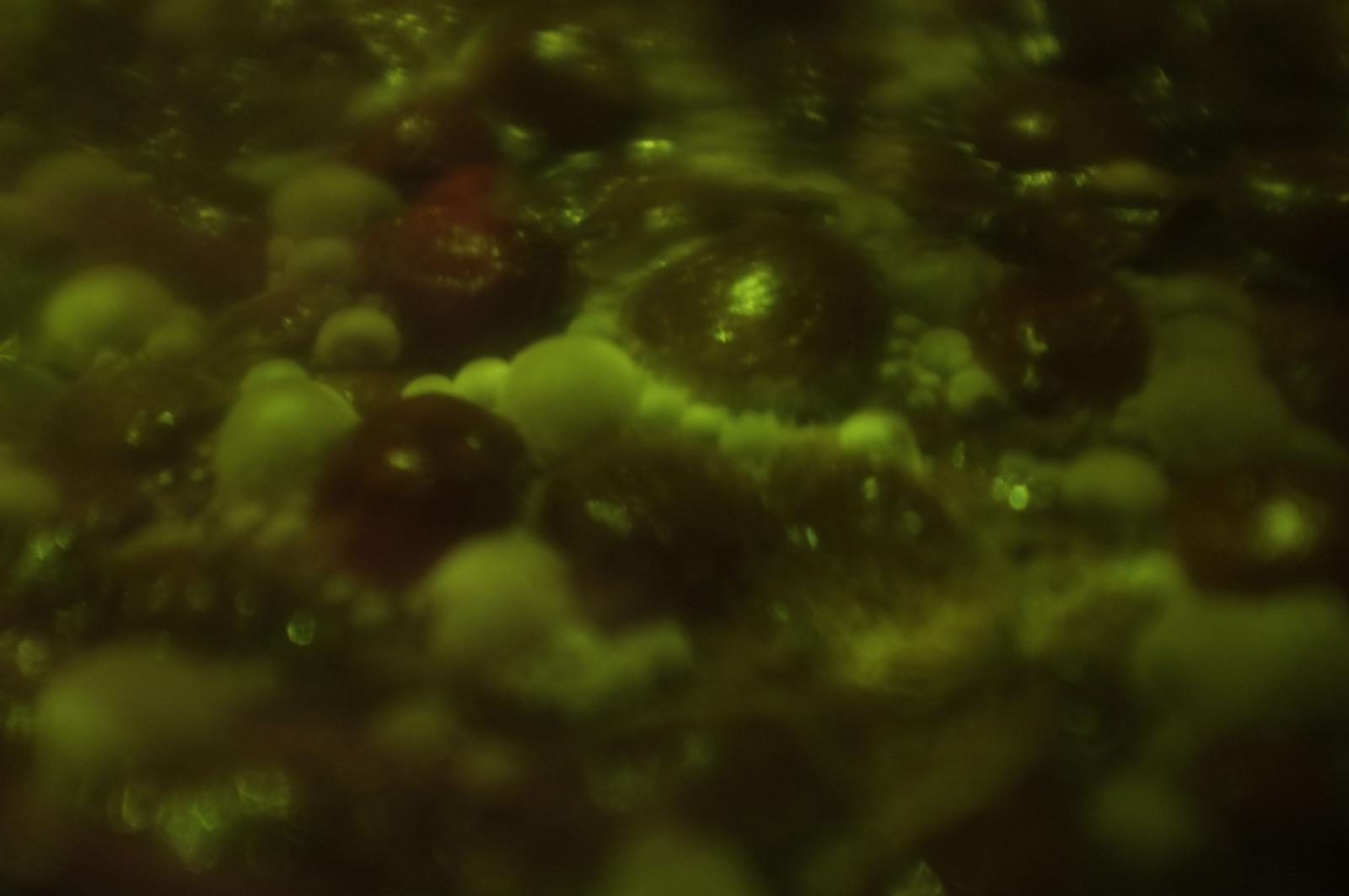So here is my first attempt at producing a saison (and first attempt at posting) with a second fermentation of cherries. I've incorporated aspects of lambic and other wild beers to make it interesting. The mountain top where I live has hundreds of fruit trees (predominantly cherries) so I will be collecting about 10 kg of wild and sour cherries next week for a second fermentation. I plan on racking onto the cherries and holding them there until the winter, i.e. 6 months or so.
I'll keep posting photos and updates for those who are interested. Any suggestions from those more experienced/knowledgeable are appreciated.
Thanks,
Nathan
GRAIN AND HOP BILL
3.10 kg DinkelMalz (35%)
3.00 kg Maris Otter Malt (32%)
1.75 kg WienerMalz (17.5%)
1.22 kg MunchnerMalz (13%)
0.20 kg Caramünch Typ II (2.5%)
60 gr Saazer Hop Pellets (3.0% AAU)
60 gr Wild Hops (Collected on mountain and dried for 1 1/2 yrs)
32 gr Hallertauer Hop Pellets (7.0% AAU)
32 gr Brewers Gold Hop Pellets (4.5% AAU)
1 pkg Safbrew Abbaye Ale yeast (11.5 g)
BEER DETAILS
Volume (liters) = 31
Conv. Rate = 65% (I can't figure out why I got such bad efficiency (usually around 80) since I hit most my mash T's?)
OG = 1.061
IBUs = 7.4
BU/GU = 0.12
The beer came out a beautiful dark caramel.
MASH PROGRAM (Actual Notes) Sunday 14 June 2015
1. 10:33 - Striked 25 liters H20 @ 126-127 F. Mash T raised to 120 F.
2. 10:43 - Added 11 liters H20 @ 90 C and mash T raised to 138-139 F. Decocted 14 liters of thick mash and put to boil.
3. 11:33 - Reinjected 1st decoction and mash T raised to 155 F. Removed 10 liters of thick mash and put to boil.
4. 12:20 - Reinjected 2nd decoction and raised mash T to 160 F.
5. 12:37 - Added 11 liters of H20 @ 90 C.
6. 12:44-13:30 - Vorlaufed with 2 liters of wort until clear. Sparged with approx. 10-12 liters of H20 @ about 80 C.
7. 13:30 - Collected approx. 48-50 liters of wort measuring 9.9 Plato (SG = 1.0396)
8. 13:30-19:30 - Boiled wort. Added dry hops right away.
9. 19:30 - Removed wort from the stovetop and added all three types of hop pellets. Whirlpooled wort and let sit for 20 minutes.
10. 19:50-20:50 - Transferred and filtered wort into the primary damigiana. 31 liters of wort collected, measuring 15 Plato or SG = 1.061. Left damigiana with top open to cool down outside.
11. 6/15/15, 7:00 - Thermometer on edge of damigiana reads 22 C (Ambient T = 18 C). Pitched Safbrew Abbaye yeast after prepping it in luke warm water for 1 hour.
When I got home from work today the fermentation was going super strong. Kreusen is a good 10 cm tall.
I'll keep posting photos and updates for those who are interested. Any suggestions from those more experienced/knowledgeable are appreciated.
Thanks,
Nathan
GRAIN AND HOP BILL
3.10 kg DinkelMalz (35%)
3.00 kg Maris Otter Malt (32%)
1.75 kg WienerMalz (17.5%)
1.22 kg MunchnerMalz (13%)
0.20 kg Caramünch Typ II (2.5%)
60 gr Saazer Hop Pellets (3.0% AAU)
60 gr Wild Hops (Collected on mountain and dried for 1 1/2 yrs)
32 gr Hallertauer Hop Pellets (7.0% AAU)
32 gr Brewers Gold Hop Pellets (4.5% AAU)
1 pkg Safbrew Abbaye Ale yeast (11.5 g)
BEER DETAILS
Volume (liters) = 31
Conv. Rate = 65% (I can't figure out why I got such bad efficiency (usually around 80) since I hit most my mash T's?)
OG = 1.061
IBUs = 7.4
BU/GU = 0.12
The beer came out a beautiful dark caramel.
MASH PROGRAM (Actual Notes) Sunday 14 June 2015
1. 10:33 - Striked 25 liters H20 @ 126-127 F. Mash T raised to 120 F.
2. 10:43 - Added 11 liters H20 @ 90 C and mash T raised to 138-139 F. Decocted 14 liters of thick mash and put to boil.
3. 11:33 - Reinjected 1st decoction and mash T raised to 155 F. Removed 10 liters of thick mash and put to boil.
4. 12:20 - Reinjected 2nd decoction and raised mash T to 160 F.
5. 12:37 - Added 11 liters of H20 @ 90 C.
6. 12:44-13:30 - Vorlaufed with 2 liters of wort until clear. Sparged with approx. 10-12 liters of H20 @ about 80 C.
7. 13:30 - Collected approx. 48-50 liters of wort measuring 9.9 Plato (SG = 1.0396)
8. 13:30-19:30 - Boiled wort. Added dry hops right away.
9. 19:30 - Removed wort from the stovetop and added all three types of hop pellets. Whirlpooled wort and let sit for 20 minutes.
10. 19:50-20:50 - Transferred and filtered wort into the primary damigiana. 31 liters of wort collected, measuring 15 Plato or SG = 1.061. Left damigiana with top open to cool down outside.
11. 6/15/15, 7:00 - Thermometer on edge of damigiana reads 22 C (Ambient T = 18 C). Pitched Safbrew Abbaye yeast after prepping it in luke warm water for 1 hour.
When I got home from work today the fermentation was going super strong. Kreusen is a good 10 cm tall.




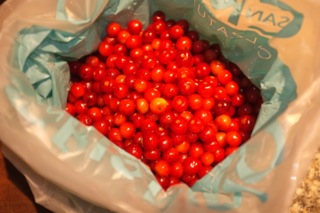


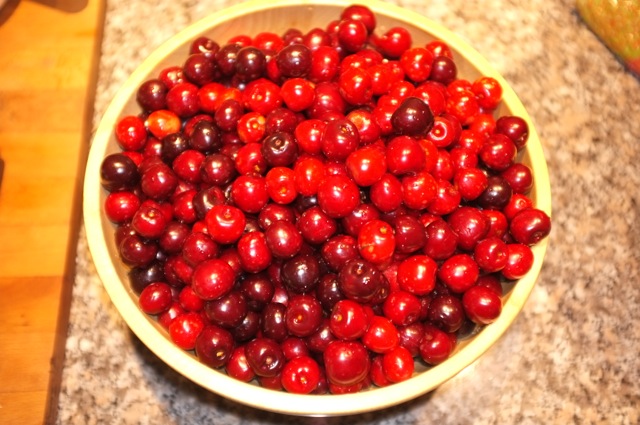

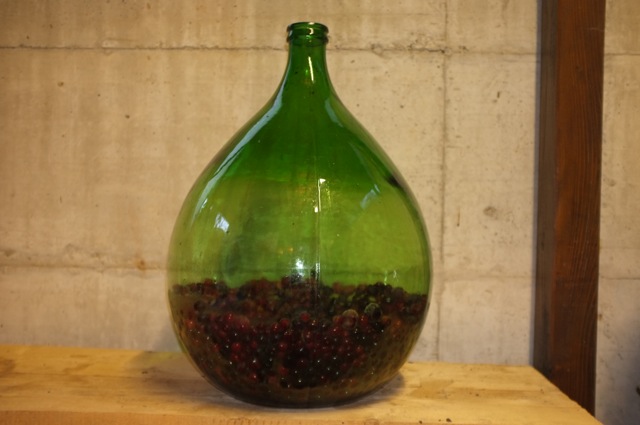

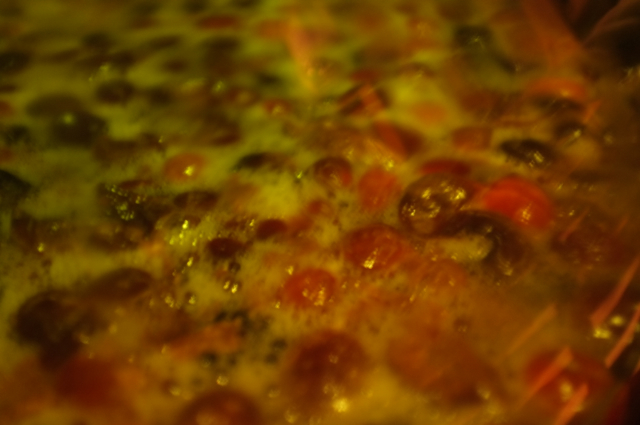

 )
)